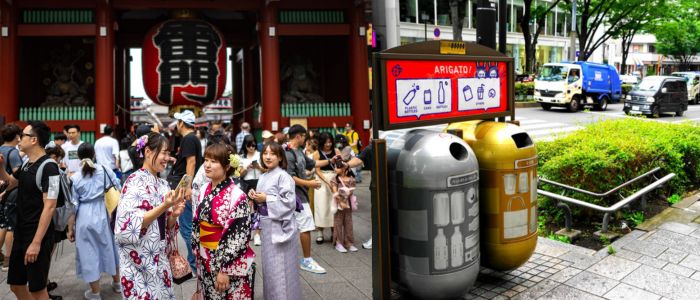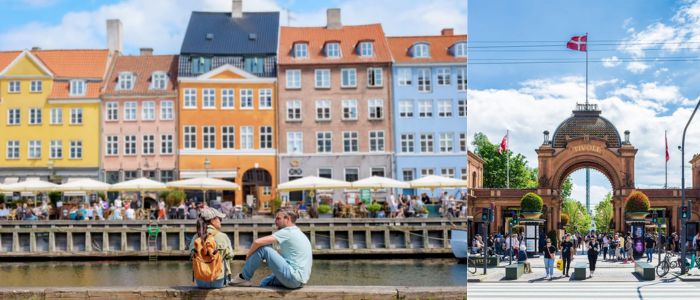Dr Chris McMorran, a professor of Japanese studies at the National University of Singapore, says this is something his students ask a lot when they go to Japan. Tourists like me are just as confused. A recent survey by Japan’s national tourism body found that 22 percent of departing tourists said the absence of trash cans was the biggest problem they encountered during their trip. That dwarfed grievances about the number of limited English speakers (15%) and the crowds at attractions (13%).
It’s a particularly difficult issue for younger, budget-conscious travelers who purchase street snacks, such as onigiri and food stall desserts. They typically wind up walking around with wrappers or containers, no trash receptacle in sight.
In Japan, eating on the go is generally considered rude. Some cities even outlaw it. Residents generally bring food back to homes or worksites to eat and dispose of their garbage appropriately. People who do eat outside frequently take along a small bag in which one can throw away such rubbish when one gets home.
But there are risks for tourism and local wildlife.
The issue of public trash has become more visible in places with booming tourism, such as Nara, as the number of tourists increases. Nara, famed for its friendly deer and ancient temples, took away trash cans from parts of its parks in 1985 to stop deer from rummaging in them. But it had tragic consequences — nine deer have died in 2019 after ingesting plastic discarded by park visitors.
In response, the city has deployed solar-powered bins at the busiest tourist sites. These bins have messages stenciled in English such as “Save the deer,” encouraging visitors to employ them.
Its bustling Shibuya district in Tokyo has also faced similar problems, particularly during large events such as Halloween. Local leaders had announced that public drinking in the area would be barred in a bid to reduce noise and litter. Some tourists on social media share advice for finding elusive public waste bins, like the ones that come near vending machines.
This is one of the charming and inscrutable aspects of Japan that many visitors find quaint rather than frustrating. But for some, it’s an daily battle. The experience of walking for hours without being able to dump a sandwich wrapper or drink bottle was exhausting, said Rubin Verebes of Hong Kong, who visited Japan in September 2024. Even the convenience stores 7-Eleven or Lawson didn’t provide trash cans.
Paul Christie, who runs a travel company in Japan, says that the cleanliness stems from profound cultural attitudes. Japanese people, he says, take collective pride in public spaces. Professor McMorran says that people are used to taking care of their waste as one of the facts of life in Japan.
Japan, too, promotes meticulous recycling. In some cities, folks have to sort their garbage into as many as 20 different categories, so the presence of big, general-purpose public bins is much less convenient.
Safety and Security at the Root of the Policy
Safety now of course is also a major factor in removing public bins as well as those “etiquette” issues and general environmental considerations. Japan was rattled on March 20, 1995, by a deadly sarin gas attack on Tokyo’s subway system by the Aum Shinrikyo cult. The attack killed 14 and injured more than 5,500.
He then approached the Union Street subway station and entered a car at random. railway and trash cans at many stations were removed in response to this and other mall bomb explosions, in an effort to foil future attacks. Some of the bins remain, but they are made differently now, with clear plastic bags that show what is inside. This is part of a broader historical trend — similar measure were implemented in London after terror attacks in the 1970s, and again in Japan after bombings in Madrid in 2004.
For those who don’t know exactly what to do with trash on the road, the traditional and stylish answer is here. The furoshiki a square cloth to wrap things into is sold at souvenior shops here and there. “It also can work to store small waste throughout the day and be repurposed as a decorative item in the home.”
Ultimately Japan’s clean streets are because of social responsibility, safety measures and people’s habits. Although tourists might find them to be a bit of an adjustment, many of them feel that learning and experiencing these customs fully enhances the travel experience.
















